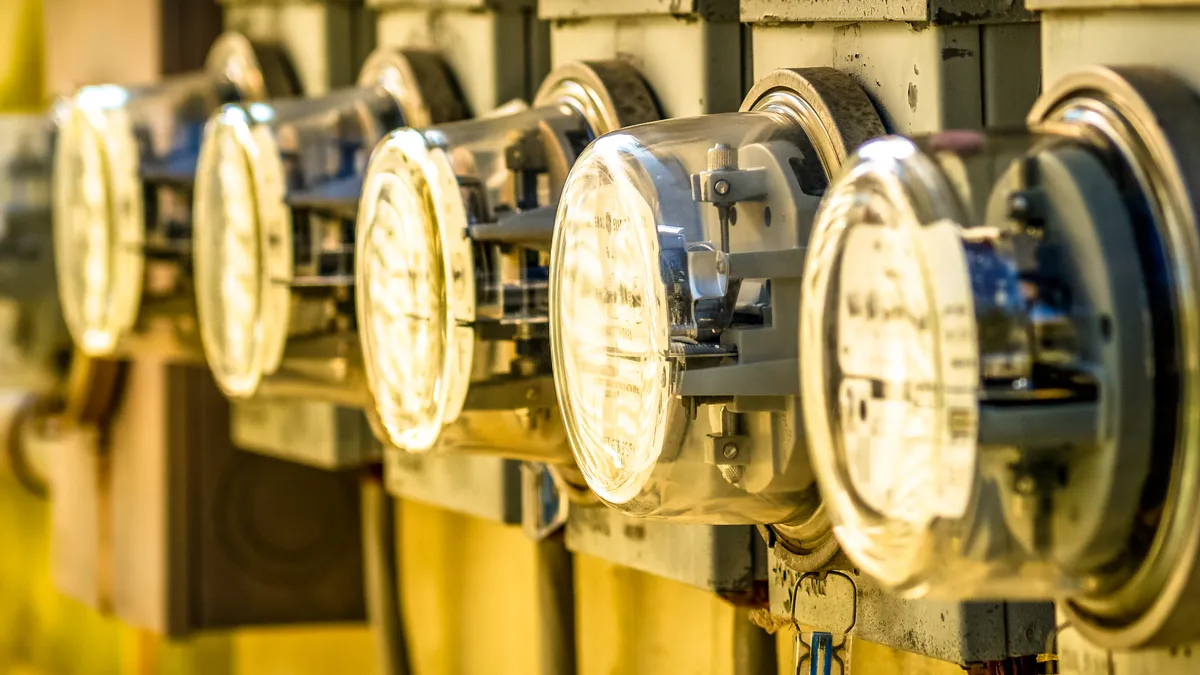Dive Brief:
- Utility regulators across the country face competing pressures as the energy transition gathers pace, including the need to balance state and corporate clean electricity targets with reliability, affordability and orderly infrastructure buildout, said four state utility commissioners on a May 8 panel at the Cleanpower Conference in Minneapolis.
- Even in states without legislative clean electricity mandates, anticipated load growth complicates efforts to process lengthy renewables backlogs amid local opposition and concerns around affordability and grid reliability, panelists said.
- “This industry tends to be slower-moving than others that get a lot of attention,” said Michigan Public Service Commission Commissioner Katherine Peretick. “We [as regulators] are going to need to move quickly and be adaptable.”
Dive Insight:
All four utility commissioners characterized ongoing increases in renewables penetration and anticipated near-future electricity demand growth as dominant concerns for their home grids. But those concerns compete for attention and resources with others, like grid reliability and demand growth, they said.
“There are so many priorities that we need to balance,” Peretick said.
Demand growth dominates grid regulators’ conversations in Georgia, said Georgia PSC Commissioner Tricia Pridemore. Significant population growth, new data centers and a green manufacturing boom led by Hyundai’s under-construction EV manufacturing hub near Savannah underpin Georgia Power’s expectations for up to 7.1 GW of new electricity demand by 2031, she said.
To meet that demand, Georgia Power has announced plans to add up to 1.4 GW in new dual-fuel capacity along with about 1 GW of battery storage. Georgia will have more solar capacity than all but three other states “once everything approved gets built,” Pridemore said.
But Georgia is already thinking about its next wave of capacity additions. The Georgia PSC is “excited” about Georgia Power’s partnership with Form Energy, which develops modular battery systems that can discharge power for up to 100 hours, Pridemore said. Longer-duration storage will help complement nuclear and fossil baseload power as electrified heating increases Georgia’s winter load, she added.
Despite delays and cost overruns on Georgia Power’s Plant Vogtle expansion, Pridemore and other commissioners sounded optimistic about adding more nuclear power capacity and expressed hope that future nuclear projects would go faster. “I don't want for the knowledge [gained during Plant Vogtle construction] to dissipate,” Pridemore said.
“The first time you tied your shoe, it took you a while…now I can tie my shoe with one hand,” she added.
Given expectations for load growth and fossil retirements, “we are trying to find any tool in the toolbox to manage things as best we can,” Iowa Utilities Board Member Joshua Byrnes said. “We can’t wait another 30 years to build the next nuclear plant.”
In the near term, Minnesota PUC Commissioner Katie Sieben suggested that utility regulators double down on efforts to streamline siting and permitting processes.
“We want to hear from the public, but it shouldn't take 15 months to get a wind permit,” she said. “We need to do a better job of explaining the benefits [of renewable energy] around reliability and affordability.”
The partial replacement of coal capacity with solar and storage at Xcel Energy’s retiring Sherco power plant shows it’s possible to expedite renewables development without shortchanging local concerns, Sieben said. Many former coal workers are retraining for jobs at the 710-MW solar facility, which will be the United States’ fifth largest, and Xcel’s site plans effectively addressed environmental advocates’ concerns about pollinator habitats and watershed protection, she said.
Meanwhile, despite dominating the energy conversation there, Michigan’s legislative mandate for 100% clean electricity by 2040 is less urgent from a regulatory perspective than shoring up the state’s shaky distribution grid, Peretick said. She pointed to an ongoing audit of DTE Electric and Consumers Energy that the PSC says will produce a final report later this summer and the commission’s effort to increase public transparency around utility performance, which includes displaying on the PSC’s website outage frequency, duration and other metrics “down to the census tract level.”
That sort of transparency “draws attention from utilities themselves” and ensures “they are going to think harder about what is displayed,” while also holding the PSC accountable, Peretick said.
The Iowa Utilities Board, meanwhile, is grappling with the more novel issue of how to regulate carbon dioxide pipelines, said Byrnes.
“This is the biggest thing in front of us as a state,” Byrnes said.
The IUB is “debating as we speak” whether to approve the Iowa portion of the proposed Summit Carbon Solutions network, a five-state, $5.5 billion project to transport carbon dioxide captured from more than 50 Midwestern ethanol plants to underground storage facilities in North Dakota, Byrnes said. Summit says the pipeline network will capture up to 18 million tons of CO2 emissions annually, but opponents have raised concerns about safety risks, damage to cropland and — despite Summit’s denials — the potential for captured carbon to be used in enhanced oil recovery.













